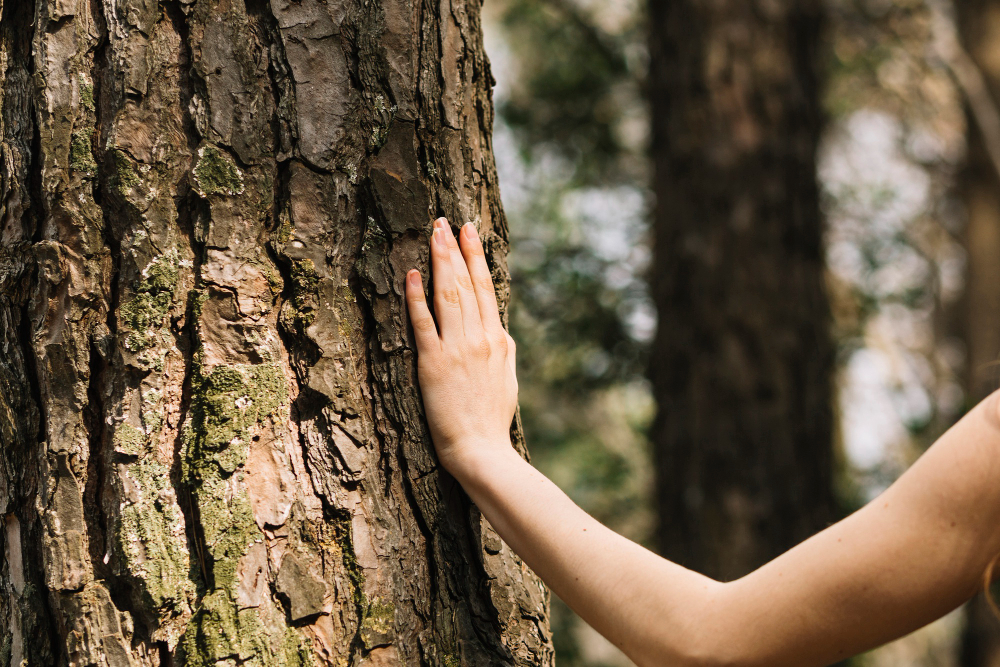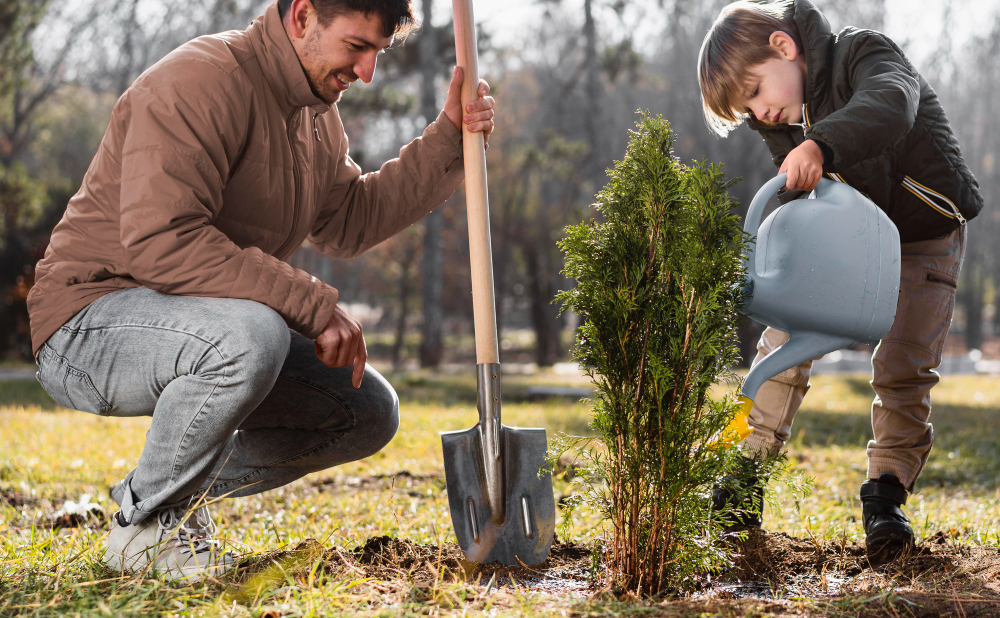Last updated on
As we enter 2024, the tree service industry thrives with innovative green trends shaping our interaction with urban forests and landscapes. Eco-conscious methods are gaining ground, aiming to balance development and nature.
From technology integration in tree care to the emphasis on native species planting, sustainability drives these emerging trends. These eco-friendly practices promote healthier tree ecosystems and reflect the evolving values of communities and professionals. Join us in exploring the six green trends redefining the arboreal work of tomorrow.
Sustainable Tree Care Methods

Sustainability is no longer just a buzzword—it’s a fundamental aspect of tree care today. Arborists at Johnny Appleseed Tree Service Eau Claire are increasingly turning to sustainable methods for tree maintenance, which involves understanding the local ecosystem and using minimal impact techniques.
One such approach is the ‘natural target pruning’ method, which focuses on the tree’s health and welfare, reducing the severity of pruning to ensure it recovers more rapidly and maintains its natural form.
Additionally, slow-release organic fertilizers and biological pest control measures are gaining traction, removing harmful chemicals that can adversely impact the environment and human health. By adopting these sustainable practices, tree service providers are preserving the natural aesthetic of their surroundings and fostering a robust urban ecosystem that supports wildlife and contributes to a healthier planet.
Organic Tree Maintenance Products
Organic tree maintenance products are surging in popularity as people become more aware of the dangers of synthetic chemicals. These products, derived from natural sources, offer several advantages over their conventional counterparts. They are often safer for the applicators, homeowners, and the environment.
Organic fertilizers provide a balanced nutrition for trees, improving soil health and minimizing nutrient leaching. Regarding pest control, organic solutions are gentler, targeting specific pests without harming beneficial insects. The organic movement in tree care isn’t just about products; it’s about a holistic approach to maintenance that recognizes the interconnectedness of trees with the entire ecosystem.
Tree Planting and Reforestation Initiatives

Climate change and deforestation have propelled tree planting and reforestation initiatives to the forefront of environmental efforts. In collaboration with local governments and conservation organizations, tree service companies are taking the lead in restoring urban forests by planting native species that support biodiversity.
These initiatives provide numerous benefits, such as improving air quality and playing a crucial role in mitigating climate change by sequestering carbon and reducing the heat island effect. In 2024, we expect to see a significant rise in reforestation projects that aim to counteract the negative impacts of urbanization on natural habitats.
Eco-friendly Equipment and Practices
Tree service providers increasingly invest in eco-friendly equipment and practices to minimize their carbon footprint. Electric chainsaws, battery-powered tools, and hybrid vehicles are slowly replacing traditional gas-powered equipment, significantly reducing noise and air pollution.
In addition to using sustainable products and methods, companies are adopting environmentally friendly practices such as recycling tree waste and using biodegradable oils for machinery. By incorporating these green initiatives into their operations, tree service providers demonstrate their commitment to protecting the environment while delivering top-notch services.
Technology Integration in Tree Care
The intersection of technology and tree care is revolutionizing the industry with sophisticated tools for diagnosis, treatment, and maintenance. Innovations like Geographic Information System (GIS) mapping provide arborists with detailed insights into tree populations, allowing for efficient management of urban forests.
Drones are becoming essential for surveying large or hard-to-reach areas, facilitating tree inspections and monitoring health on a large scale.
Moreover, mobile applications assist tree care professionals in real-time data collection, client communication, and project management. The advent of remote sensing technology also aids in detecting tree stress and disease before they become visible to the naked eye.
Embracing these technological advancements, tree service companies are enhancing their operational efficiency and contributing to more effective urban forestry practices.
Community Engagement
Finally, community engagement is becoming an integral part of tree service as companies recognize the importance of involving residents and local organizations. Community tree planting events, educational workshops, and partnerships with environmental groups are ways tree service providers actively engage with communities to promote green initiatives.
These efforts create a sense of ownership and pride among community members and foster a deeper understanding and appreciation for the value of urban trees.
The green movement in tree service is not just a fad but a critical evolution in improving the health and vitality of our urban and rural forests. As we immerse ourselves in these green trends, we are enhancing the appeal of our landscapes and ensuring that future generations can enjoy the myriad benefits of a robust tree canopy.
Whether through the products we use, the initiatives we support, the tools we employ, or the technologies we harness, the tree service industry shows an unwavering commitment to sustainability. In 2024 and beyond, these five green trends are charting a new course for a more eco-friendly, responsible, and forward-thinking tree care industry.
Table of Contents




